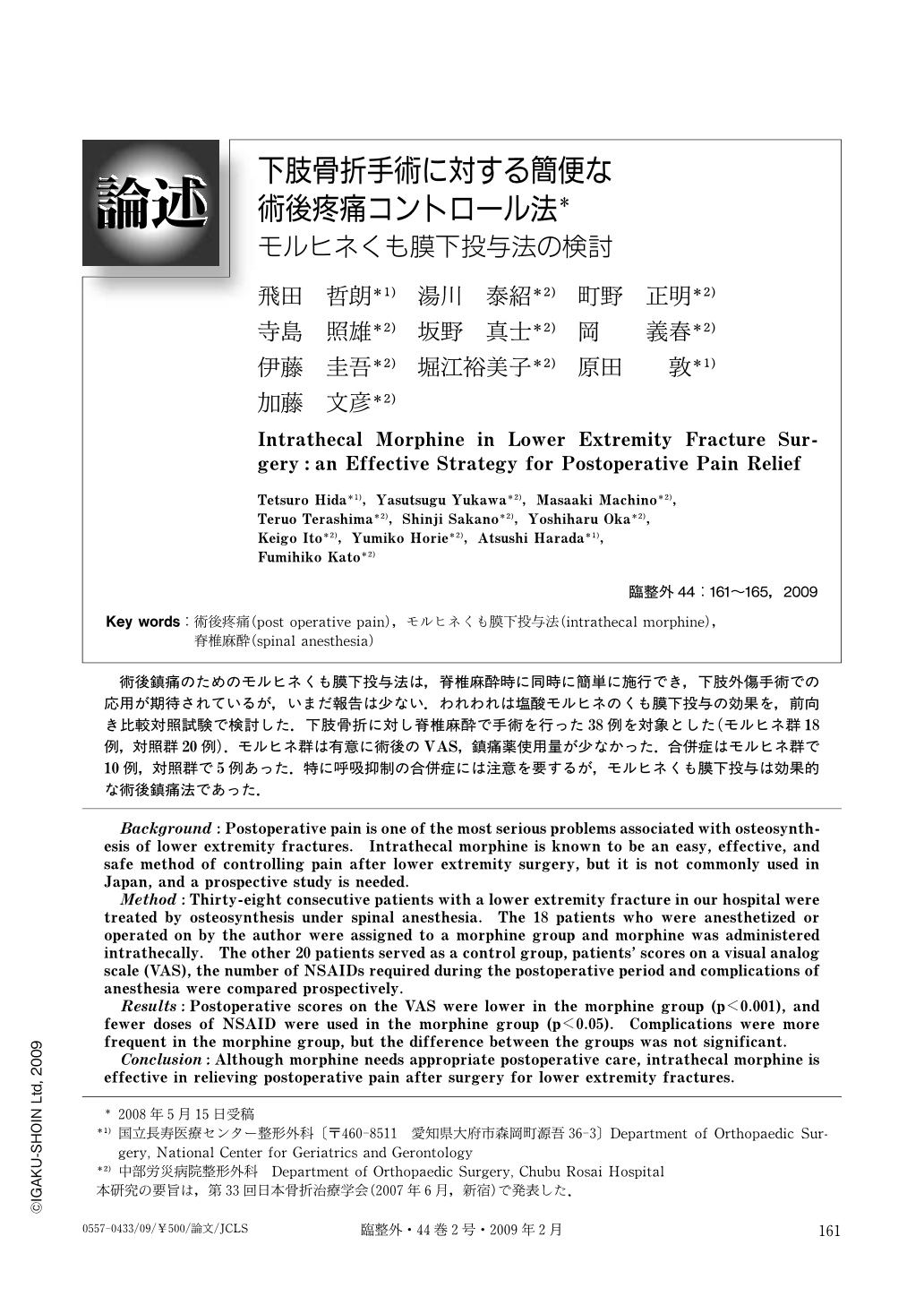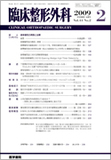Japanese
English
- 有料閲覧
- Abstract 文献概要
- 1ページ目 Look Inside
- 参考文献 Reference
術後鎮痛のためのモルヒネくも膜下投与法は,脊椎麻酔時に同時に簡単に施行でき,下肢外傷手術での応用が期待されているが,いまだ報告は少ない.われわれは塩酸モルヒネのくも膜下投与の効果を,前向き比較対照試験で検討した.下肢骨折に対し脊椎麻酔で手術を行った38例を対象とした(モルヒネ群18例,対照群20例).モルヒネ群は有意に術後のVAS,鎮痛薬使用量が少なかった.合併症はモルヒネ群で10例,対照群で5例あった.特に呼吸抑制の合併症には注意を要するが,モルヒネくも膜下投与は効果的な術後鎮痛法であった.
Background:Postoperative pain is one of the most serious problems associated with osteosynthesis of lower extremity fractures. Intrathecal morphine is known to be an easy, effective, and safe method of controlling pain after lower extremity surgery, but it is not commonly used in Japan, and a prospective study is needed.
Method:Thirty-eight consecutive patients with a lower extremity fracture in our hospital were treated by osteosynthesis under spinal anesthesia. The 18 patients who were anesthetized or operated on by the author were assigned to a morphine group and morphine was administered intrathecally. The other 20 patients served as a control group, patients' scores on a visual analog scale (VAS), the number of NSAIDs required during the postoperative period and complications of anesthesia were compared prospectively.
Results:Postoperative scores on the VAS were lower in the morphine group (p<0.001), and fewer doses of NSAID were used in the morphine group (p<0.05). Complications were more frequent in the morphine group, but the difference between the groups was not significant.
Conclusion:Although morphine needs appropriate postoperative care, intrathecal morphine is effective in relieving postoperative pain after surgery for lower extremity fractures.

Copyright © 2009, Igaku-Shoin Ltd. All rights reserved.


